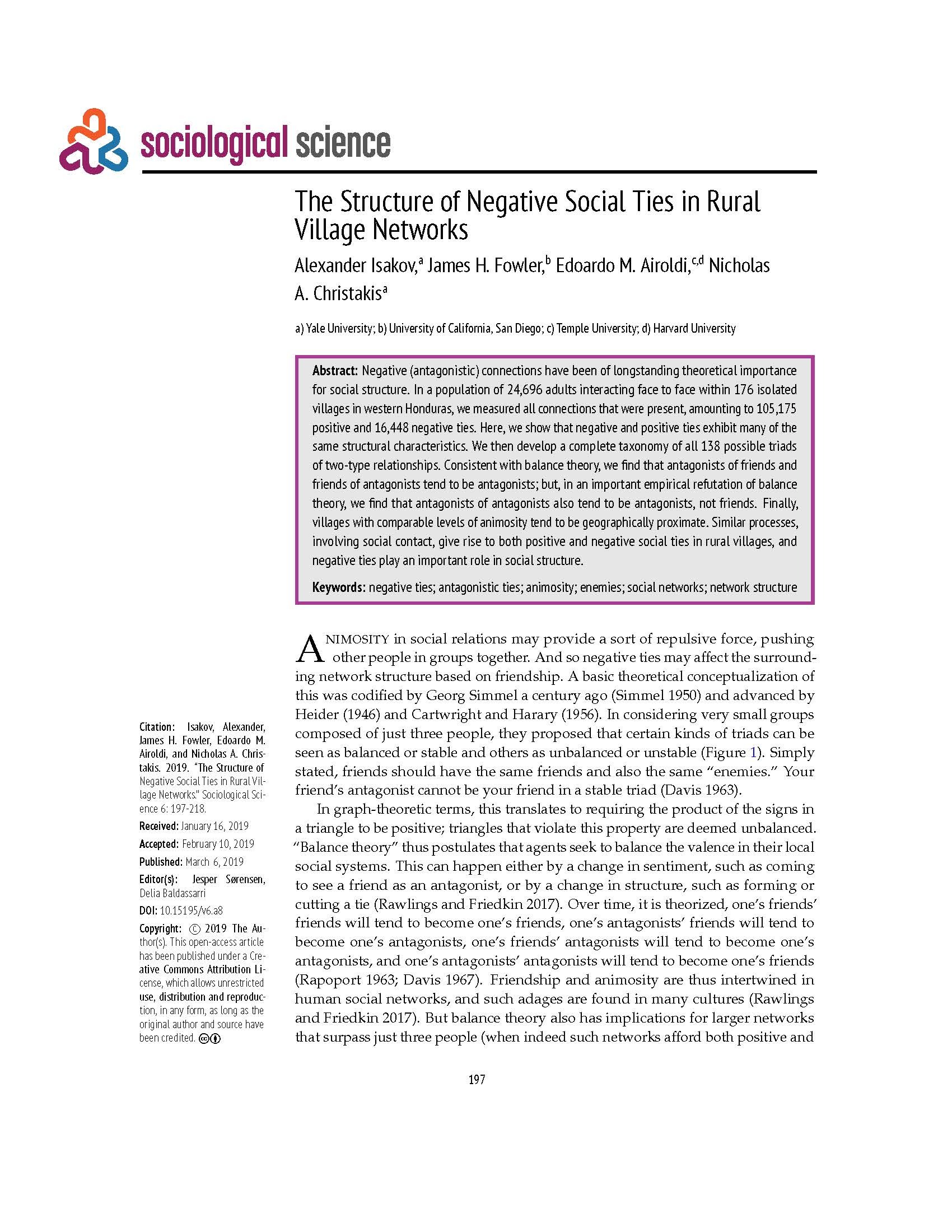
The Structure of Negative Ties in Rural Village Networks
Abstract
Negative (antagonistic) connections have been of longstanding theoretical importance for social structure. In a population of 24,696 adults interacting face to face within 176 isolated villages in western Honduras, we measured all connections that were present, amounting to 105,175 positive and 16,448 negative ties. Here, we show that negative and positive ties exhibit many of the same structural characteristics. We then develop a complete taxonomy of all 138 possible triads of two-type relationships. Consistent with balance theory, we find that antagonists of friends and friends of antagonists tend to be antagonists; but, in an important empirical refutation of balance theory, we find that antagonists of antagonists also tend to be antagonists, not friends. Finally, villages with comparable levels of animosity tend to be geographically proximate. Similar processes, involving social contact, give rise to both positive and negative social ties in rural villages, and negative ties play an important role in social structure.
Citation:
A. Isakov, J.H. Fowler, E. Airoldi, and N. A. Christakis, “The Structure of Negative Ties in Rural Village Networks,” Sociological Science, Vol. 6, p197-218 (Mar 2019) DOI: 10.15195/v6.a8